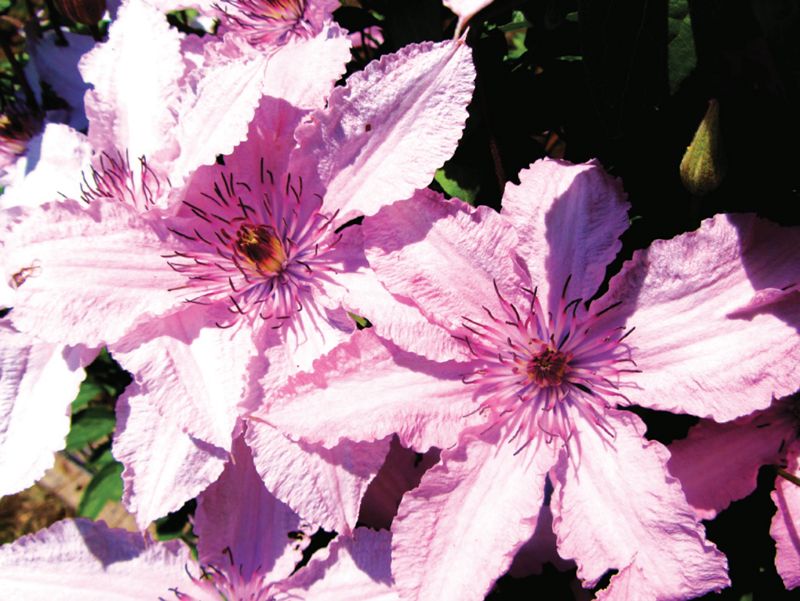- Home
- News, Articles & Reviews
We are hiring! Please click here to join our growing magazine delivery team in Gloucestershire!
Areas
Homes & Gardens
Archive

Spring has sprung
All Areas > Homes & Gardens > In the Garden
Author: Julia Smith, Posted: Thursday, 24th April 2014, 08:00
Spring should definitely have sprung by now! But, my gardening friends, if you have taken any notice of my nagging these last few months you will be ahead of the game with a weed-free garden as it springs into life. Take some photos of the position of bulbs so that you can identify any gaps that need filling in the winter.
Clematis need constant tying in as they scramble up their supports. Use soft twine and tie in a ‘figure of 8’, being careful not to damage the delicate stems. They look superb growing up through climbing roses and shrubs, extending the season of interest or flowering at the same time as their host, but with contrasting colours. Try Sambucas racemosa ‘Sutherland Gold’ with a beautiful blue Clematis ‘Perle d’Azur’ growing through it, or a lovely Rosa ‘Gertrude Jekyll’ with Clematis ‘Etoille Violette’ scrambling up it. If you chose late flowering clematis the pruning is more simple as they are ‘Group 3’ and just need to be chopped off about 30cm high in early spring – very easy! Give the clematis a spring feed with a high-potassium rose-type fertilizer gently forked into the soil surface, and then water and mulch (but don’t let the mulch touch the stems as it may rot them).
Look out for the bright red lily beetles on your lilies and fritillaries. You can either just pick and squash or use an insecticide like Provado ultimate bug killer which is systemic and will kill the larvae when they start to munch on the plant. The larvae are disgusting looking as they cover themselves with their own black faeces (still I’m sure their mothers love them).
You should be able to start hardening off tender herbaceous plants which you may have bought in the tempting indoor displays in the garden centres and nurseries. This consists of a couple of weeks of taking them outside during the day, and popping them back into the greenhouse or conservatory at night, gradually leaving them for longer and longer until they are out all night. Keep an eye on the weather in case of frosts etc. (although goodness knows we really shouldn’t get any this late on!). You can make a cold frame out of old windows, Perspex off –cuts etc. Place it in a warm, sheltered spot – raise the lid in the day to circulate the air and cover over at night if you have no greenhouse.Copyright © 2025 The Local Answer Limited.
Unauthorized use and/or duplication of this material without express and written permission from this site's author and/or owner is strictly prohibited. Excerpts and links may be used, provided that full and clear credit is given to The Local Answer Limited and thelocalanswer.co.uk with appropriate and specific direction to the original content.More articles you may be interested in...


© 2025 The Local Answer Limited - Registered in England and Wales - Company No. 06929408
Unit H, Churchill Industrial Estate, Churchill Road, Leckhampton, Cheltenham, GL53 7EG - VAT Registration No. 975613000You are leaving the TLA website...
You are now leaving the TLA website and are going to a website that is not operated by us. The Local Answer are not responsible for the content or availability of linked sites, and cannot accept liability if the linked site has been compromised and contains unsuitable images or other content. If you wish to proceed, please click the "Continue" button below:




